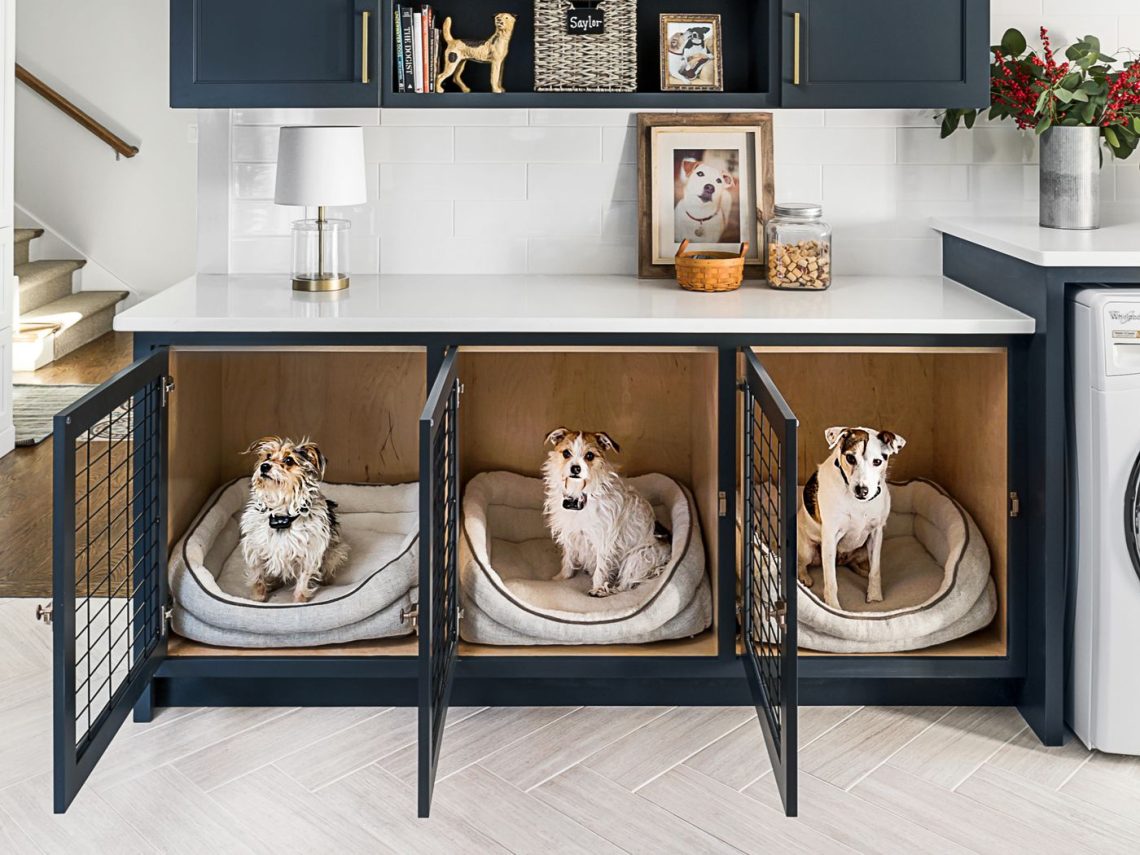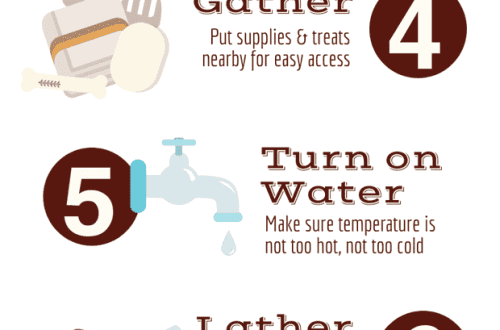
How to accustom a dog to a cage in an apartment
It is possible that the owner will have to train his elderly dog to the cage from scratch. It happens that an adult pet appears in the house, or the owners have a need to keep the dog in one place for an hour or more. In this case, the lack of this skill can create a lot of stress for the whole family. How to train an adult dog to sit in a cage – further.
Contents
Why Cage Train an Older Dog?
Some dog owners consider cage training a good practice, while others have significant doubts about it. There are a number of good reasons for crate training an older dog. Among them:
safety and preparedness for emergencies and natural disasters;
safe transportation and facilitation of travel with a pet;
more convenient and safer trips to the veterinarian;
restriction of movement during illness or during the recovery period after an injury;
providing a safe hiding place in stressful situations.
In emergency situations, cages often provide the animal with more security than a harness or having complete freedom of movement. It is important to remember that dogs, with the exception of pets with a traumatic past, do not generally have negative associations with cells like humans do. And even for those four-legged friends who have them, these negative associations can be turned into positive ones.
Can an adult dog be trained to a cage?
The phrase “you can’t teach an old dog new tricks” is completely untrue. Older pets are quite capable of learning new things, but the training process can be more difficult than when accustoming a puppy to a cage. Toddlers find everything new interesting and are not bound by the usual way of life. Older dogs, on the other hand, are creatures of habit, and sometimes, before you can teach them new skills, you need to help them forget the old ones. The main thing is to be patient. This process may require a lot of repetition and practice, but in the end your elderly friend will definitely succeed.
On the other hand, an older dog with a calm disposition may enjoy the safe comfort of a crate even more than a puppy. It is better to choose a quiet place for the cage, away from crowds, so that the dog can run there and take a nap during a party or on a noisy day when the children are at home.
How to start accustoming an adult dog to a cage on your own at home
The following steps will help to form a positive attitude towards the cage in an elderly four-legged friend:
Prepare the cage. You need to choose a cage that is spacious enough so that the dog can comfortably lie down, stand up and turn around, writes Rover. It is better to put a soft blanket inside to make the cage more comfortable, and place it with the door open where the dog can see and inspect it. So the pet can get used to the new piece of furniture before starting the process of accustoming.
Prepare yourself. It’s best for the owner to keep a positive attitude about the dog’s stay in the cage. Animals are extremely sensitive to the emotions of the owner, so the dog can also start to worry. You should not move on to training until you can do it in a good mood.
Prepare the dog. Preventive Vet recommends giving your dog plenty of exercise before starting training so they burn off excess energy and are ready to relax, as well as letting them pee so they don’t have to go to the bathroom.
Form positive associations. A good place to start is by placing treats and perhaps one or two of your dog’s favorite toys near the cage door. You need to praise her when she approaches the door to take a toy or a treat.
Lure the dog inside. As soon as she learns to approach the cage door, you should put treats and toys right inside. You can try putting food and water bowls in her cage. It is best to start by placing them near the door and gradually move them to the back of the cage until the dog begins to enter the cage completely.
Try to close the door. To begin with, you can cover for just a second, and then open again and release the dog. So she will understand that she will definitely be released. This procedure should be repeated until the dog learns to remain calm while inside with the door closed, and then you can increase the time by a few seconds. Next, you need to increase its stay in the cage from time to time.
If the dog panics or starts to worry, you need to release it and take a break. It may not work right away and the owner will have to go back a stage or two or even start from the very beginning. Once the dog is ready to be caged, it should not be left there for more than a few hours at a time, unless it needs to be caged overnight.
Puppies, and older dogs with small or weak bladders, should not be kept in the crate longer than they can resist the urge to go to the toilet.
Even if there are currently no plans to place a pet in a cage, it is worth making such training a regular practice. So you can prepare the dog in advance for those times when the cage is needed. With proper training, the right attitude and a lot of patience, being in a crate can be a positive and even soothing experience for a dog.





